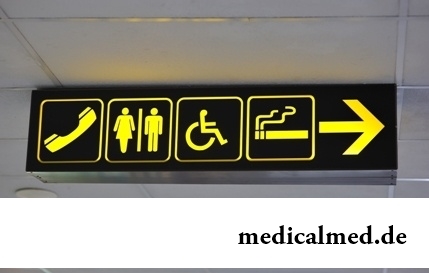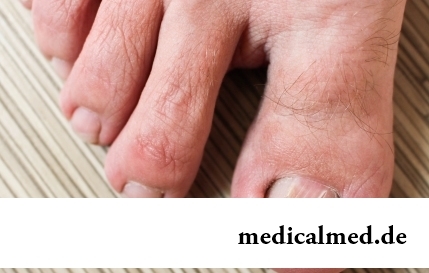





Alotendin
Application instruction:
 Alotendin – the combined hypotensive drug containing the selection beta adrenoblocker and a blocker of slow calcium channels.
Alotendin – the combined hypotensive drug containing the selection beta adrenoblocker and a blocker of slow calcium channels.
Form of release and structure
Dosage form – tablets: oblong, slightly convex from two parties, almost white or white color, with risky on one party and an engraving (Е 571, E 572, E 573 or E 574) on another, inodorous (on 7 pieces in the blister, in a pack of cardboard 4 or 8 blisters; on 10 pieces in the blister, in a pack of cardboard 3 or 9 blisters).
Active agents of drug: амлодипин and бисопролол (in the form of a fumarat), their contents, respectively, in tablets with an engraving:
- Е 571 – 5 mg and 5 mg;
- Е 572 – 5 mg and 10 mg;
- Е 573 – 10 mg and 5 mg;
- Е 574 – 10 mg and 10 mg.
Excipients: cellulose microcrystallic, sodium carboxymethylstarch (type A), magnesium stearate, silicon dioxide colloid anhydrous.
Indications to use
- Arterial hypertension (as monodrug or in a combination with other anti-hypertensive means);
- Chronic stable stenocardia (as monodrug or in a combination with other anti-anginal means);
- Replacement therapy of patients at whom the arterial pressure and/or chronic stable stenocardia can adequately be controlled by use of an amlodipin with bisoprololy in the same doses.
Contraindications
Absolute:
- Bradycardia (heart rate less than 60 уд. / minute) before an initiation of treatment;
- Sick sinus syndrome;
- Cardiogenic shock;
- The expressed aorta stenosis;
- Atrioventricular block of II or III degrees (without pacemaker);
- Arterial hypotension (systolic arterial pressure <100 mm hg);
- Unstable stenocardia;
- The acute heart failure or episodes of heart failure demanding intravenous administration of inotropic drugs;
- Sinuatrial blockade;
- Metabolic acidosis;
- Late stages of occlusal diseases of peripheral arteries;
- Severe form of a syndrome of Reynaud;
- Serious chronic obstructive illness of lungs or heavy bronchial asthma;
- Not treated pheochromocytoma;
- Psoriasis, including in the anamnesis;
- Lactation;
- Age up to 18 years (because of insufficiency of data on safety and efficiency of use of Alotendin);
- Hypersensitivity to any component of drug or derivatives of dihydropyridine.
With care:
- The arterial hypertension and stenocardia connected with heart failure;
- Diabetes mellitus with big fluctuations of level of glucose in blood;
- Hyperthyroidism;
- Starvation or rigid diet;
- Printsmetal's stenocardia;
- Atrioventricular block of the I degree;
- Occlusal diseases of peripheral arteries;
- Pheochromocytoma (Alotendin it is possible to apply only after blockade of alpha adrenoceptors);
- Bronchial asthma and other chronic obstructive diseases of lungs (it is necessary to carry out simultaneous bronkhodilatiruyushchy therapy);
- Liver failure;
- At the same time carried out desensibilizing therapy;
- Carrying out surgical intervention under the general anesthesia (drug it is necessary to cancel not later than in 48 hours prior to anesthesia).
Route of administration and dosage
Alotendin it is necessary to accept inside on 1 tablet of 1 times a day, in the morning, swallowing entirely and washing down with enough liquid. Meal does not influence its efficiency.
The doctor defines a specific dose individually.
Side effects
Classification of side effects: often (≥1/100 - <1/10), infrequently (≥1/1 000 - <1/100), it is rare (≥1/10 000 - <1/1 000), is very rare (<1/10 000), frequency is unknown (on the basis of the available data assessment cannot be carried out).
Possible undesirable reactions:
- From cardiovascular system: often – bradycardia, tachycardia; infrequently – arterial hypotension, deterioration in the available heart failure, AV conductivity disturbance;
- From a nervous system: often – fatigue, drowsiness, вертиго, a headache; infrequently – frustration of a dream, a visual disturbance, paresthesia, a hypesthesia, a syncope, a food faddism, changes of mood, a peripheral neuropathy, a tremor, a depression; seldom – dreadful dreams, a hearing disorder, hallucinations;
- From system of bodies of a hemopoiesis: infrequently – thrombocytopenia, a leukopenia, a purpura;
- From the alimentary system: often – abdominal pains, diarrhea or a lock, nausea, vomiting; infrequently – dyspepsia, a hyperplasia of gums, dryness in a mouth, pancreatitis; seldom – increase in activity hepatic enzymes, hepatitis; frequency is unknown – gastritis, jaundice, a cholestasia, hepatitis (these side effects are more often shown in an initiation of treatment, are usually expressed slightly and disappear within 1-2 weeks);
- From system of a respiratory organs: infrequently – rhinitis, short wind, cough, a bronchospasm or bronchial asthma at patients with an obstructive disease of lungs in the anamnesis;
- From a musculoskeletal system: infrequently – arthralgias, spasms in muscles, a mialgiya, muscular weakness, a dorsodynia;
- From endocrine system: often – inflows; infrequently – a hyperglycemia, a gynecomastia, disturbance of a potentiality;
- From an urinary system: infrequently – frustration of an urination, a pollakiuria, a nocturia;
- From an organ of sight: seldom – decrease in secretion of the lacrimal liquid; very seldom – conjunctivitis;
- Dermatological reactions: infrequently – the increased perspiration, decolouration of skin, an alopecia; very seldom – psoriazopodobny changes on skin, development or deterioration in a course of psoriasis;
- Allergic reactions: seldom – skin reactions, rash, an itch, a Quincke's disease, allergic rhinitis, hypersensitivity reactions (inflows, an itch, rash), a mnogoformny exudative erythema; frequency is unknown – a small tortoiseshell;
- From an organism in general: often – feeling of a cold snap and numbness of extremities, hypostases (including peripheral); infrequently – change of body weight (increase or decrease), an adynamy, exhaustion, a vasculitis; seldom – increase in level of triglycerides.
Separate cases of such heavy reactions as arrhythmia (ciliary arrhythmia and ventricular tachycardia), stenocardia, myocardial infarction are known. They are connected with a basic disease or using Alotendin, authentically it is not established.
Special instructions
Drug should not be cancelled sharply, especially at coronary heart disease since deterioration in a clinical state is possible. It is recommended to reduce a dose gradually.
Alotendin reduces secretion of the lacrimal liquid, it should be considered to patients who carry contact lenses.
In some cases drug can influence the speed of reactions and ability to concentration of attention, especially at the beginning of use, at change of a dose and simultaneous alcohol intake.
Medicinal interaction
Alotendin it is not necessary to apply along with blockers of calcium channels of the I class (for example, verapamil) and the III class (diltiazem) as they negatively influence sokratitelny ability, arterial pressure and atrioventricular carrying out. Intravenous administration of verapamil to the patients receiving beta adrenoblockers (бисопролол) can lead to the expressed arterial hypotension and an atrioventricular block.
Alotendin is not recommended to combine with anti-hypertensive drugs of the central action (for example, metildopy, moksonidiny, a clonidine, rilmenidiny) as such combination can lead to a vazodilatation, an urezheniye of heart rate and minute volume of heart. In case of sharp drug withdrawal the risk of development of the withdrawal which is shown in the form of hypertensia increases.
Alotendin it is necessary to apply with care at the same time with the following drugs: nitrates of long action, beta adrenoblockers, thiazide diuretics, peroral hypoglycemic drugs, non-steroidal anti-inflammatory drugs, antibiotics, trinitrate glyceryl drugs for sublingual use.
In a combination with the following medicines Alotendin it is also necessary to apply carefully:
- Dihydropyridine derivatives (nifedipine), blockers of calcium channels of the II class: can raise arterial hypotension; at patients with heart failure – to increase probability of strengthening of further deterioration in pumping function of ventricles;
- Parasympathomimetic means: can cause increase in time of atrioventricular carrying out and by that to strengthen risk of development of bradycardia;
- Non-steroidal anti-inflammatory drugs: can reduce anti-hypertensive effect of Alotendin;
- Peroral hypoglycemic drugs and insulin: can cause strengthening of hypoglycemic effect, because of blockade of β-adrenoceptors masking of symptoms of a hypoglycemia is possible;
- Antiarrhytmic drugs I of a class (for example, пропафенон, lidocaine, quinidine, Phenytoinum, Disopyramidum, флекаинид): can strengthen effect of drug for the period of atrioventricular carrying out, and also exponentiate a negative inotropic effect;
- Antiarrhytmic drugs III of a class (for example, Amiodaronum): can strengthen effect for the period of atrioventricular carrying out;
- The drugs for topical administration containing beta adrenoblocker (for example, eye drops for treatment of glaucoma): can influence system effects of Alotendin;
- Foxglove glycosides: can urezhat heart rate and increase time of atrioventricular carrying out;
- Anti-hypertensive drugs and other means with hypotensive effect (for example, fenotiazina, tricyclic antidepressants and barbiturates): can increase risk of development of arterial hypotension;
- Beta and sympathomimetic means (for example, Dobutaminum and изопреналин): can reduce effect of both active ingredients of Alotendin.
At patients to whom the general anesthesia is carried out beta adrenoblockers (in this case бисопролол) reduce the frequency of arrhythmia and ischemia of a myocardium during induction of anesthesia, an intubation and in the postoperative period. Now maintenance of beta blockade is recommended to be provided perioperatsionno. The anesthesiologist has to remember beta blockade since there is a potential probability of interaction with other drugs owing to what easing of reflex tachycardia is possible, development of a bradyarrhythmia, oppression of a reflex opportunity to compensate blood loss. If before surgical intervention it is necessary to stop Alotendin's reception, it is necessary to do it gradually, having completely completed administration of drug approximately in 48 hours prior to anesthesia.
Meflokhin can increase risk of bradycardia. Monoamine oxidase inhibitors (except for inhibitors like B) can strengthen hypotensive effect of a bisoprolol and increase risk of development of hypertensive crisis. The possibility of simultaneous use of these medicines in each case is solved individually.
Terms and storage conditions
To store at a temperature up to 25 °C in the place, dry, dark and unavailable to children.
Period of validity – 2 years.
When lovers kiss, each of them loses 6,4 calories a minute, but at the same time they exchange nearly 300 species of various bacteria.

Iodine - one of thirty most important microelements in our organism. The main role of iodine consists in synthesis thyroid гормо...
Section: Articles about health
Memory is an ability of the central nervous system to fix, keep and as necessary to reproduce information on knowledge or skills received by the person or an animal during life. The mechanism of this process is up to the end not studied....
Section: Articles about health
Zone hypostases under eyes - very widespread problem giving to people is a lot of inconvenience. Hypodermic fabric in these parts has very loose structure and almost does not contain collagenic fibers. Besides, the skin covering подглазья constantly is exposed to compression and stretching when the person blinks, blinks, etc. These features also create premises for emergence of the so-called bags which are giving to the face a tired and sickly look, and also visually adding increased...
Section: Articles about health
Statistically, at the address to doctors seven of each ten patients complain of a headache. Actually people, periodically...
Section: Articles about health
The saying "the rich do not know how the other half lives" is known to all. In a broad sense it is that we can not always understand the person whose features of a state are unknown to us. If with physiological characters of diseases the situation is more or less clearly (having noticed and...
Section: Articles about health
The word "onikhokriptoz" is unfamiliar to most of people, meanwhile quite so physicians call very widespread problem: the growing of edge of a nail into surrounding fabrics causing inflammatory process. Usually the illness affects thumbs of legs, and is followed by reddening, hypostasis, and in the started cases – release of pus. Patients complain of the pain amplifying when walking, problems with the choice of footwear....
Section: Articles about health
Mushrooms - the surprising inhabitants of our planet having a set of wonderful qualities. Thanks to one of them, a mold mushroom of Penici...
Section: Articles about health
Life does not indulge the modern woman special emotional comfort and carelessness. The fatigue, troubles at work, misunderstanding in a family and various illnesses immediately affect a condition of hair and skin. And to look safe and attractive so хоч...
Section: Articles about health
The pancreas performs two functions in a human body: release of enzymes without which digestion of carbohydrates, fats and proteins, and a producing hormones is impossible. The most important of them - insulin, is the main participant of carbohydrate metabolism normalizing processes of education and utilization of glucose, the main energy source for an organism....
Section: Articles about health
Beauty shop – the place which is associated only with positive emotions: joy, pleasure, relaxation. One...
Section: Articles about health
For many spouses the question of planning of a family is one of the main. The problem of the choice of effective and safe contraceptives at the same time comes out on top. Russians still not often resort to operation of a vasectomy extremely popular in the USA...
Section: Articles about health
EKO, or extracorporal fertilization - a method of treatment of infertility which became the reason of a set of broken-down copies in due time accused the people working on its creation neither more nor less of rivalry good luck. Already very few people deny the right of a method for existence, and to surprise nobody with "children from a test tube". And nevertheless, a certain magic in the procedure of artificial fertilization is, process of origin of new life is always a secret, and even it р now...
Section: Articles about health
Each of us repeatedly noticed that the people having the same passport age are sometimes not similar on one-years at all. One...
Section: Articles about health
Sooner or later hair turn gray at all. Many people try to hide these changes, returning natural color of the hair by means of coloring, or considerably changing it for the purpose of creation of absolutely new image. All know that the gray hair is a sign приближающ...
Section: Articles about health
The number of long-livers is very small. One person from 5 thousand lives up to age of 90 years, and the centenary boundary steps over only one of 20 thousand. However, doctors claim that each of us is quite able to affect own destiny. At the same time it is not so much about living as long as possible, how many about an opportunity to keep physical and intellectual activity and to avoid decrepitude. We will also talk about the ways helping to achieve this result today....
Section: Articles about health
Practice of use of table salt in the therapeutic purposes contains not one century. Appl are considered especially effective...
Section: Articles about health
About 20% of the population of our planet have a hypertension (permanent increase in arterial pressure). This disease has an adverse effect on the standard of living, reduces working capacity, and in the absence of systematic treatment threatens with such complications as a heart attack...
Section: Articles about health
Almost each of us during life faced dissatisfaction with own body. At such moments, as a rule, we begin to shame ourselves, urgently we go on the most rigid diet promising minus of 10 kg in a week, or we exhaust ourselves in the gym to almost death. As a rule, similar attempts come to an end with a campaign to the refrigerator for jamming of the next stress. Further history repeats itself with individual frequency....
Section: Articles about health
Deciding to get rid of an addiction, not all imagine what effects it is necessary to face. Process of refusal from ку...
Section: Articles about health
From the failure of work of immune system which is shown in the form of an allergy, statistically, more than 40% of the population of the globe suffer. In most cases pathological reactions cause the substances which are contained in food stuffs, hair of animals, medicines...
Section: Articles about health
On the head of the person about one million hair follicles, or as they are called still, hair bulbs are located. At the time of the birth most of them is in the "sleeping" state, but within several weeks follicles become more active, and from them hair begin to grow. Intensity of this process is individual, and during life it can change. Genetic predisposition, a physical and emotional state, aggressive influence affects the growth rate of hair out of...
Section: Articles about health
The medicine promptly develops, and the fact that else quite recently it seemed by miracle can now. We are not surprised any more to the fact that sport...
Section: Articles about health
Life of the modern woman is very difficult. Opportunities to realize itself are wide: it not only education and career, but also the most various hobbies from sport before needlework. It is not less important to build private life, paying an attention maximum to children, the husband, parents, e...
Section: Articles about health
Smoking not only exerts a negative impact on the state of health of the consumer of tobacco products, but is an air polluter the substances potentially dangerous to people around. In recent years significantly the number of the people aiming to get rid of an addiction increased. Business this difficult: having left off smoking, the person immediately begins to suffer from abstinence. Besides, many yesterday's smokers feel at first great disappointment as улучш...
Section: Articles about health
Run - one of the most available and effective ways to revitalize the organism. Knowing about its extraordinary advantage, each of us though...
Section: Articles about health
The summer of this year in Russia was very ambiguous. Regions suffered from a merciless heat, from pouring rains, the hail from time to time dropped out, then there was again a heat which alternated with rainfall again. Many people suffer from such sharp changes of weather...
Section: Articles about health
Statistically, pathologies of a thyroid gland in the world more than 500 million people have. Failures in work of this body lead to heavy disbolism, development of heart diseases, vessels, a reproductive and nervous system. In hard cases excess or insufficient production of the main hormones of a thyroid gland (thyroxine and triiodothyronine) leads to essential decline in quality of life and disability....
Section: Articles about health
